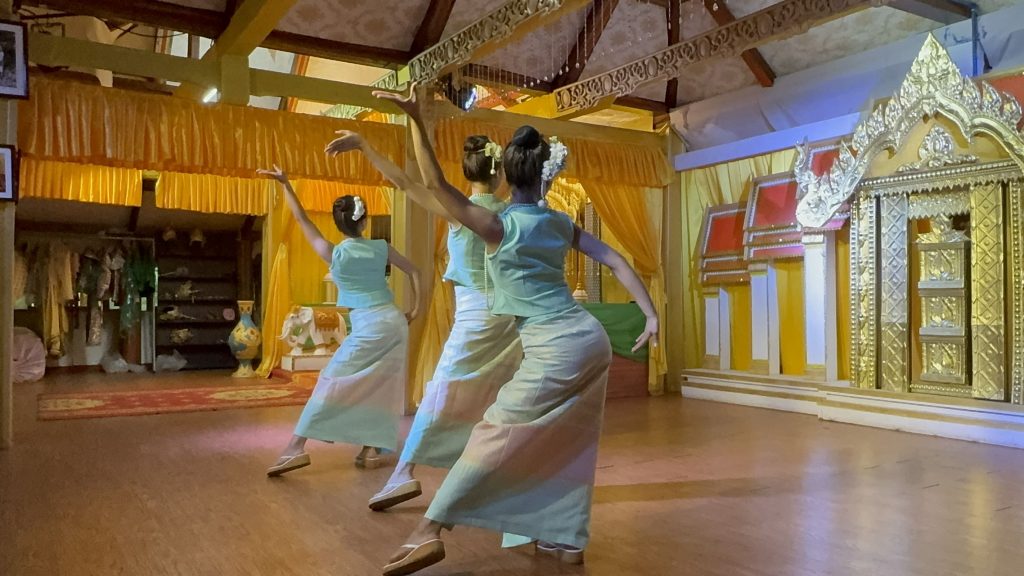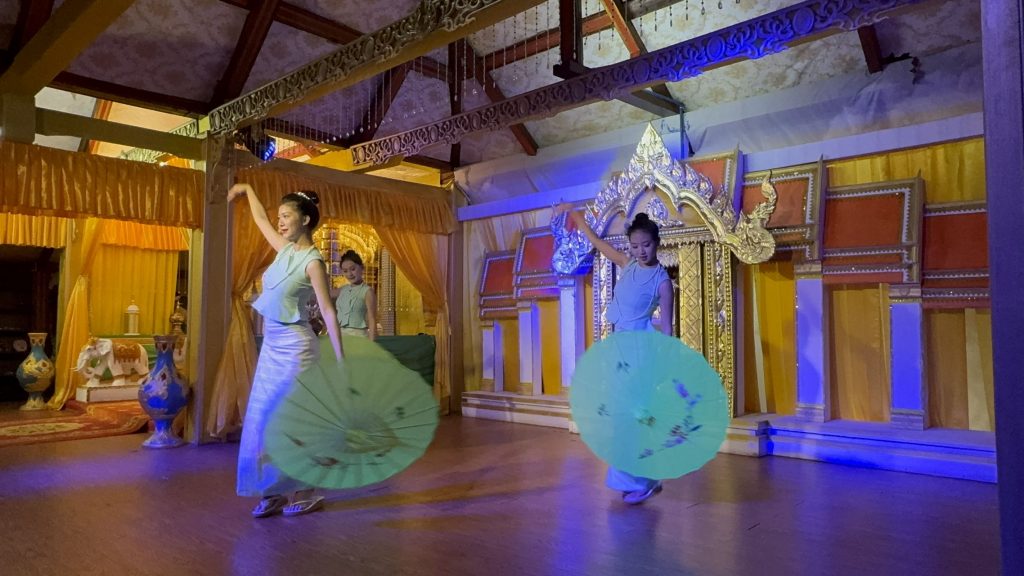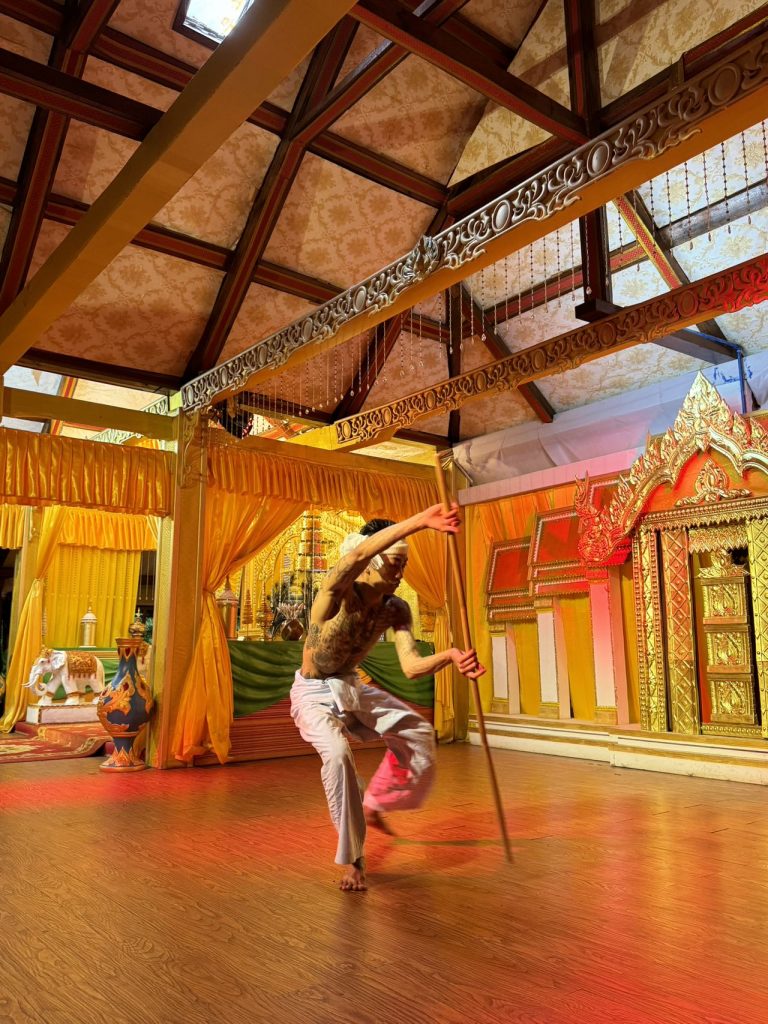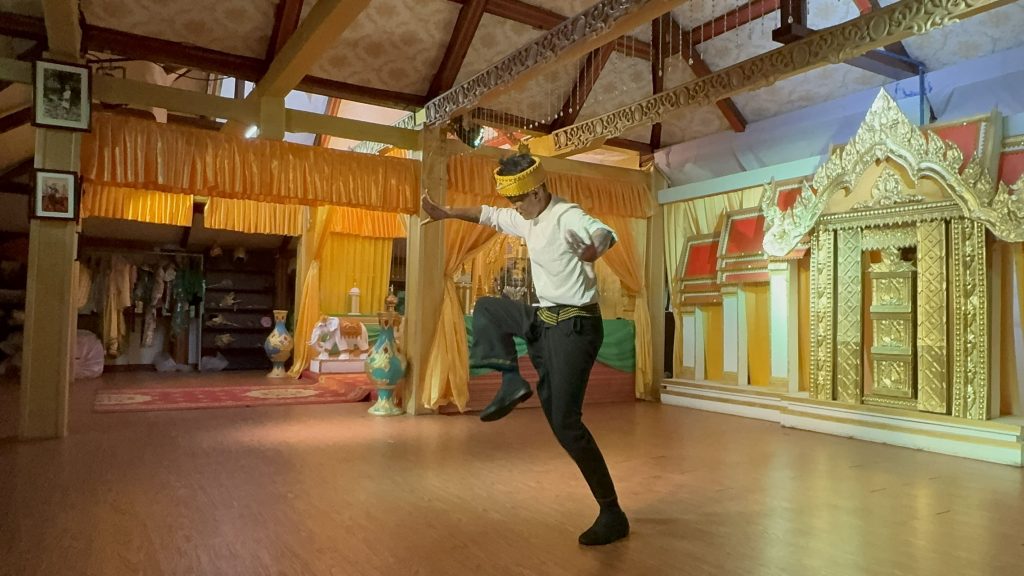After watching the Dai dance performance yesterday, I interviewed the head of the Dai village. The purpose of the interview was to learn more about the customs and culture of the Dai people. I recorded a total of 8 minutes of interview video + dance video. I will post my interview content below:

–Can you briefly introduce yourself?
I am Jin Rong, a cultural display personnel at the Dai Village in Yunnan Nationality Village.
–Can you briefly describe the ethnic characteristics of the Dai people?
Both men and women tend to be slim. Because they live in the subtropical rainforest region and enjoy eating sour and spicy food, they usually maintain a good physique.
–What do you think are the characteristics of Dai ethnic clothing?
As mentioned earlier, the Dai people are slim, so their clothing tends to be smaller. Especially for girls, their skirts, known as ” wrapped waist skirt,” are tightly wrapped around the waist, making it very slim. Girls also wear flowers as accessories on their heads. As for boys, their pants are usually loose, clothes are more fitted, and they must wear headgear (hats).


–What do you think are the standout features of Dai ethnic dance?
The most distinctive feature of Dai ethnic dance is the “Three Bends.” This refers to the requirement that the hands, waist, and feet all need to bend during the dance, making it a unique aspect of Dai ethnic dance.
Ps:Unlike traditional Chinese dance, Dai ethnic dance does not emphasize the grace, charm, and spirituality of body movements. The study of body movements in Dai ethnic dance is largely derived from biomimicry. Dai people observe the lifestyle, habits, diet, and behavior of peacocks, extracting the physical characteristics specific to Dai ethnic dance. The concept of the “Three Bends” does not refer to specific dance movements but rather a static posture involving the body, arms, and legs. The “Three Bends” posture aims to make the dancer’s body more graceful and facilitate the performance of Dai ethnic dance movements.


–Do you think Dai ethnic clothing can be worn as daily wear?
In the past, this type of clothing was worn daily. During major festive occasions, such as festivals, we also have more elaborate traditional attire.
–From your observations, do young Dai people still wear Dai ethnic clothing? Do they still have a deep understanding of their own culture, such as dance?
From my observations and understanding, currently only a few people still wear traditional clothing. In daily life, like myself, I may not wear my ethnic clothing regularly. It’s usually reserved for special occasions like festivals. Regarding dance, a very small number of people choose to pass it down, while the majority do not engage deeply in these cultural practices.
–My assignment is about cultural appreciation and cultural appropriation. How do you think if foreigners wearing Dai ethnic clothing or learning Dai ethnic dances?
I feel proud when foreigners choose to wear our Dai ethnic clothing or learn our dances. Their interest in our culture shows their admiration for the Dai ethnicity. Therefore, I support and welcome their involvement.
–Lastly, how do you think the intangible cultural heritage of the Dai people can be better passed down?
I believe for better preservation, it is essential for our generation or the next generation of our own people to first preserve and showcase it. Whether domestically or internationally, making others appreciate our culture is crucial. Only then can the Dai ethnic culture be better preserved and passed on.
In the conversation with the head of the Dai village in Yunnan National Village, I learned more about the basic content of Dai dance and costumes. This experience gave me a better understanding of Dai cultural knowledge. The Dai people love animal movements and extend it to their ethnic dance. After watching the dance, I can see that the Dai people love the place where they grew up. I was deeply shocked by the culture of Dai dance.